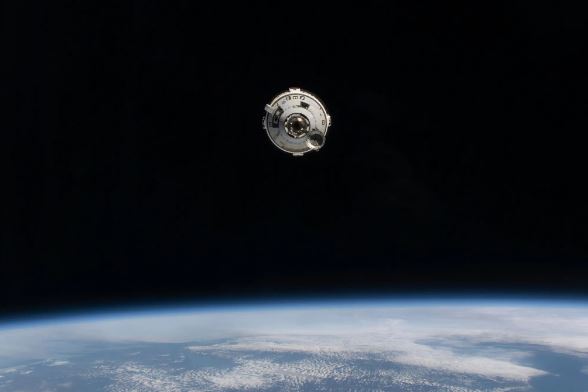After spending three months at the International Space Station (ISS), Boeing’s Starliner spacecraft is scheduled to return to Earth on Friday evening. Starliner, which has faced a series of technical challenges throughout its development, will make its landing at White Sands Space Harbor in New Mexico, approximately six hours after undocking from the ISS. However, NASA and Boeing officials have announced several contingency dates—September 10, 14, or 18—should bad weather or unforeseen technical issues arise.
The spacecraft’s return will be an unmanned mission, leaving behind the two NASA astronauts it initially transported to the space station: Suni Williams and Butch Wilmore. Although NASA officials believe Starliner could have safely returned the astronauts to Earth, they opted for a more cautious approach, extending their stay on the space station and scheduling their return for February on SpaceX’s Crew Dragon spacecraft, designed by SpaceX.
Concerns Over Propulsion Issues Persist
In June, as Starliner approached the ISS, propulsion system malfunctions caused concern among NASA and Boeing officials. Despite extensive post-flight analysis and ground testing, the root cause of these issues remains elusive. Yet, both NASA and Boeing maintain confidence in the spacecraft’s ability to return safely to Earth.
“We have confidence in the vehicle,” said Steve Stich, NASA’s commercial crew program manager, during a press conference. He emphasized that Starliner had already performed successful landings during previous test flights, albeit without a crew aboard.
However, residual concerns led NASA to delay Williams’ and Wilmore’s return until February. They will now return on SpaceX’s Crew Dragon spacecraft, which has been performing ISS missions successfully since 2020. According to Dana Weigel, NASA’s program manager for the space station, the astronauts have been thoroughly trained for an extended stay. They have also prepared for spacewalks and handling the station’s robotic arm, adapting to the new plan with ease.
Adjusted Departure Procedures
Starliner’s return flight will be different from what was originally planned. Since the spacecraft will be unmanned, NASA has modified the maneuver that Starliner will perform after undocking. Instead of the standard procedure for manned flights, the spacecraft will now move away from the ISS faster, using less stress on the thrusters.
“It’s a quicker way away from station, way less stress on the thrusters,” Stich explained. The maneuver involves firing Starliner’s thrusters in shorter pulses, which are less likely to generate the excessive heat thought to have contributed to the spacecraft’s propulsion issues in June.
In that earlier flight, Starliner experienced diminished performance in several of its 28 smaller thrusters. Helium, a crucial inert gas used to push propellant through the system, also leaked during the June mission. Fortunately, Starliner still retains more than enough helium for its return journey.
The spacecraft’s descent will rely on a key maneuver—a firing of the larger thrusters that will drop Starliner out of orbit. While the smaller thrusters, including those that malfunctioned during docking, will help maintain the spacecraft’s orientation, the larger thrusters are primarily responsible for the deorbit burn. Should these larger thrusters fail, the smaller ones are equipped to serve as a backup.
Future Uncertainty for Starliner
If Starliner’s return landing is successful, the spacecraft’s future remains uncertain. June’s flight was intended to be the final step in certifying Starliner for regular crewed missions to the ISS, but the propulsion problems have raised doubts about whether Starliner is truly ready for this role.
NASA may request Boeing to conduct another crewed flight test before officially certifying Starliner for operational missions. The space agency previously required Boeing to redo an unmanned test flight after the first attempt in December 2019 encountered significant technical difficulties.
Boeing’s Starliner program has come under intense scrutiny, not just because of the technical issues, but also due to the substantial financial costs incurred by the company. The aerospace giant signed a $4.2 billion contract with NASA in 2014 to develop Starliner, a fixed-price agreement that only allows Boeing to receive payments after meeting specific milestones, like flight certification. Unlike traditional government contracts, which allow for cost overruns, Boeing is responsible for covering any additional expenses under this deal.
As a result, Boeing has already written off $1.6 billion in costs for the Starliner program. Despite these setbacks, NASA Administrator Bill Nelson said last month that Boeing’s new chief executive, Kelly Ortberg, had assured him that the company remained committed to Starliner’s success.
With Friday’s return mission serving as a critical test, Starliner’s performance will likely determine the spacecraft’s role in NASA’s future crewed missions to the ISS.

